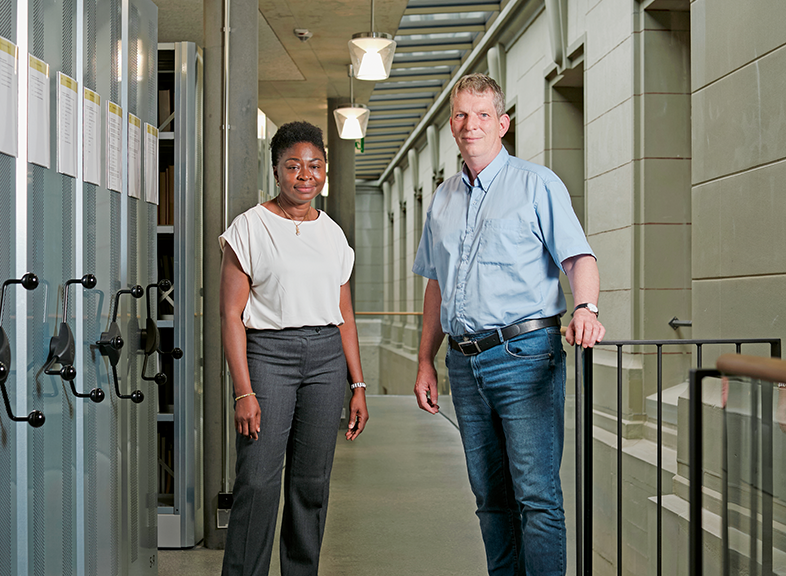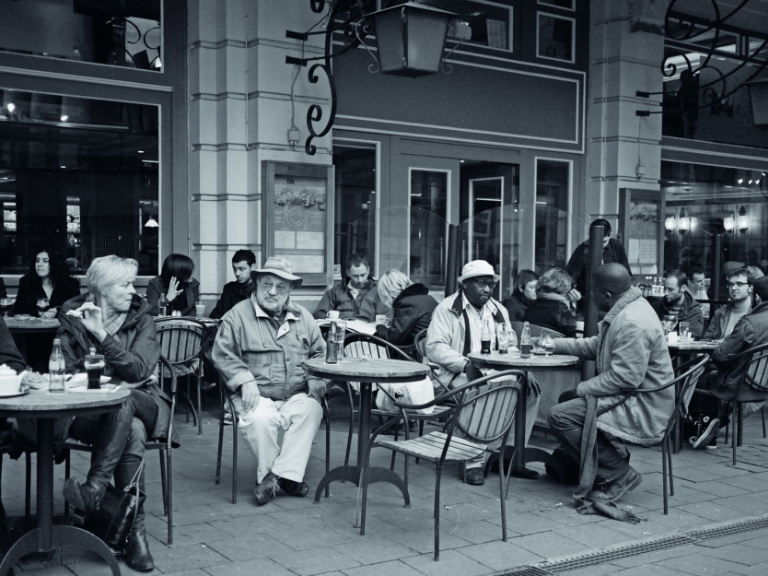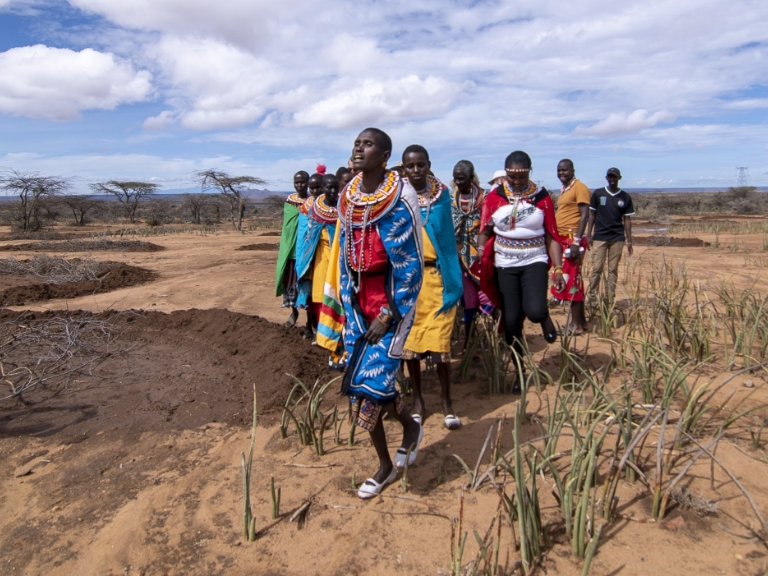Afrofuturism
Under the sign of Sankofa
The Djiboutian novelist Abdourahman Waberi reflects on his Dürrenmatt Guest Professorship in World Literature in Bern. Together with his students, he pondered the possibilities: Could the future be African? His vision, symbolised by a West African animal, is clear and optimistic.
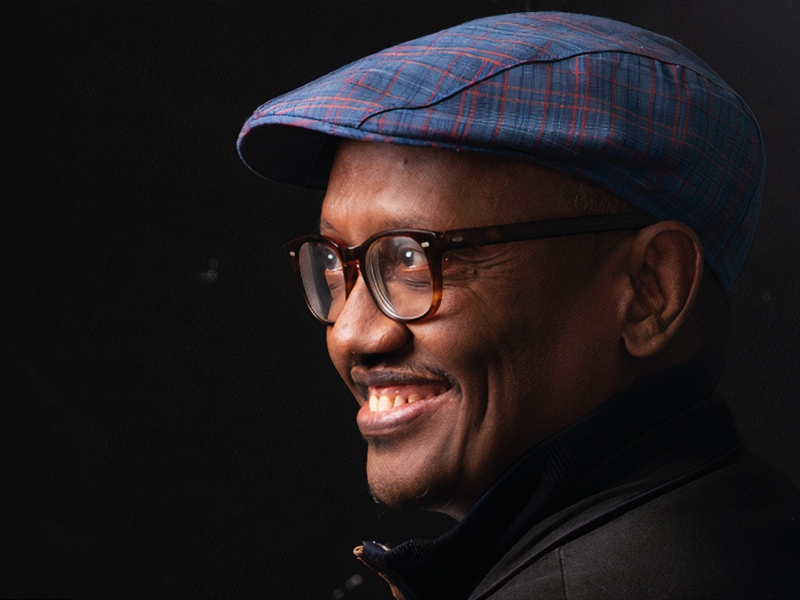
A creature from the West African bestiary, well-known to the African diaspora in the Americas, lends its form to this essay. The beautiful bird, Sankofa, gracefully arches its body towards what lies ahead, while simultaneously turning its head to look into the past. For the Akan people of Ghana and Côte d’Ivoire, it symbolises the imperative quest for knowledge and serves as a reminder that nothing of substance can be conceived if the foundation is neglected or ignored.
Today, Sankofa adorns the pediments of many institutes and departments of historical sciences around the world. It has left the Akan cultural fold to form ties with other symbols from distant lands. It has followed the path of those who “change through ex-change with the other, without losing or diluting one’s sense of self”, to use Édouard Glissant’s definition of creolisation. Sankofa looks over its shoulder at the path it has travelled, taking time to savour the present before proceeding with caution. It expresses the deep human need to learn, to travel, to create, or to dream.
I am a happy teacher, when I see my students’ faces light up with the inspiration of a character or a work from the past. We are a species of storytellers, always in search of a new name, an original expression, a scent to discover.
About the person
Abdourahman Waberi
lives in France and, on his Friedrich Dürrenmatt Guest Professorship for World Literature, introduced his students in Bern to Afrofuturism: identities, forms of expression and future visions of the African diaspora. Waberi currently teaches Francophone literature at George Washington University.
Longing for Africa
In the immediate vicinity of Sankofa, I collaborated with the Congolese writer Alain Mabanckou on a playful dictionary of African cultures, the Dictionnaire enjoué des cultures africaines (also published in German as Der Puls Afrikas). Its positive reception encouraged us to conceive a sequel: Notre France noire de A à Z, which translates into English as “Our Black France from A to Z” and aims to educate and entertain, while at the same time paying tribute to forgotten personalities, dates, and monuments. In filling these gaps, we have responded to a need expressed at the highest level by President Macron, who proposed the creation of a register of “300 to 500 names of local districts and immigrant origins” to name streets in France.
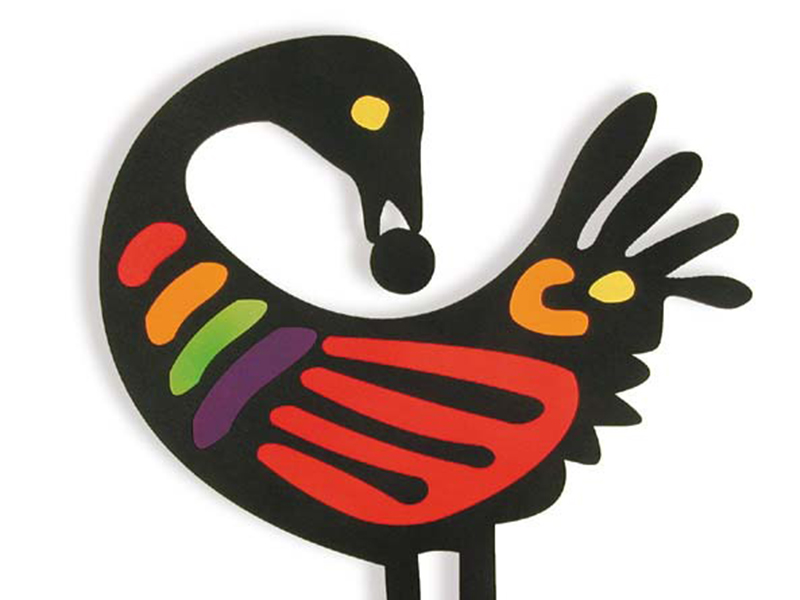
I was not very surprised to find that my students at the University of Bern shared the same longing for another place, the same desire for Africa. Our seminar on African futures was a success. Their end-of-semester work made this abundantly clear, much to our delight. It must be said that throughout the semester, we walked along ridge paths, accompanied by writers, philosophers, filmmakers, and daring artists who offered us their radical works. On more than one occasion, we ventured off the beaten track to create our own space of meaning, distancing ourselves from the ethnological shortcuts and the development imperatives of international institutions (the World Bank, the IMF) influenced by the rational, mechanistic logic that has dominated the world for the last three or four centuries. A logic that has been elevated to the pinnacle of human potential. A logic that still largely prevails in economic and political circles. In its wake, Man has become the master and owner of what he has called nature, offering a foreshortened perspective of his inner self and psyche. He has unwittingly instilled the primacy of the short term over the long term, of quantity over quality, of uniformity over diversity, of having over being, of the individual over the community, and so on.
The roots of the ecological crisis run deep
Our exploration has not been easy. The spirits invoked by Cheikh Hamidou Kane, Ahmadou Hampâté Ba, Nnedi Okorafor, or Maryse Condé move in other spatio-temporal dimensions. They defy our irritations and our impatience. They show us the way. The global ecological catastrophe and its myriad manifestations reveal the limits of the Cartesian model, which advocates the great separation between Man and his double (or his shell) called nature. The separation from life and its consequence: the commodification of the world.
Subscribe to the uniAKTUELL newsletter

Discover stories about the research at the University of Bern and the people behind it.
In the company of such visionaries, there can be no doubt that this ecological crisis is more profound than it might at first appear. Its roots run deep into the realms of ethics, philosophy, ritual, and spirituality; a diagnosis that is increasingly finding common ground, even acceptance. In its quest for progress, material and technical civilisation has lost its moral compass and its sense of priorities.
Take a deep breath, stop the clocks
As a symbol, Sankofa has more to teach than the arrow of time, which represents time as matter always flowing in the same direction. To invoke Sankofa is to take a deep breath, to stop the clocks, to question the West’s obsession with dichotomies that systematically reproduce divisions and Manichaeism in different domains: between spirit and matter, old and new, male and female, written and oral, tradition and modernity.
“Sankofa expresses the deep human need to learn, to travel and to dream.”
Abdourahman Waberi
In Africa, Western reason is not something foreign to be fought or rejected but is already incorporated into the networks of meaning that permeate the imagination of the continent’s peoples. It plays its part in all the resources mobilised to meet the basic needs of these populations. This must be done through a direct approach to economic issues, which are not an end in themselves but a popular means of ensuring the fullness of humanity, not as a singularity, but as ubuntu, as a humanity defined by multiple bonds of solidarity. This is how ancient peoples lived before the advent of destructive human activities, which, it must be emphasised, were inconceivable and unacceptable to our ancestors, whether they came from the African savannah, the Swiss mountains, or the Siberian steppes. If any creature, human or non-human, whispered to them that we are fighting all week to save or not to save the water cycle, seeds, or endangered species, they would turn over in their graves.
Peace is priceless
In this context of cognitive dissonance, of the failure of the civilisational project, there is a great danger that the human fabric will be further torn apart by border disputes, deadly wars, or nuclear arms races. Africa is the only continent with the moral integrity needed to lead others towards global disarmament. Some of the uranium used in the nuclear weapons industry comes from this very continent – from Niger, for example. In the past, nuclear tests were carried out in Africa by two major Western powers: France conducted its first test in the Algerian desert between 1960 and 1966, and Israel is said to have conducted its own test in the Prince Edward Islands, two uninhabited islands in the sub-Antarctic Indian Ocean, during the days of apartheid. Africa has thus been exposed to nuclear fire on its own soil, without benefiting from it. Finally, two African countries (Libya and South Africa) have themselves voluntarily ended their nuclear programmes. Voilà, four factors, which, taken together, give the continent considered to be the poorest economically a comfortable moral advantage. Peace is priceless.
Magazine uniFOKUS

Africa
This article first appeared in uniFOKUS, the University of Bern print magazine. Four times a year, uniFOKUS focuses on one specialist area from different points of view. Current focus topic: Africa
Subscribe to uniFOKUS magazineAn African approach for the humanities
For today’s humanities, the African way would mean ploughing alternative paths of coexistence, charting rarely used territories, reorienting the relationships between different symbolic orders and spheres: the social, the political, the economic, the spiritual. In our chaotic times, such acuity of thought and vision is essential. It would result from exploring a future not written in advance, integrating heritage and invention, audacity and patience, experimentation and expansion beyond our current boundaries to discover new possibilities elsewhere. Such acuity requires the dual movement represented by the sacred Akan bird, which manages to look back into the archives of the past while simultaneously opening up new horizons.
Into the deep forests of Afrofuturism
When my students were overcome by fatigue and despair, when the virtual Cassandras and their barbed-wire dreams managed to obscure the beauty of the world, we would disappear into the deep forests of Afrofuturism. There we would wait for the owl of Minerva, which in Greek mythology accompanies Athena, the goddess of wisdom, to beckon us back to the surface. We then took all the time we needed to catch our breath in a clearing in the woods, before proceeding more deliberately on our path. Above our heads, two birds in the best of company: on one side, the owl of Minerva, and on the other, the unique profile of Sankofa, its African cousin.
